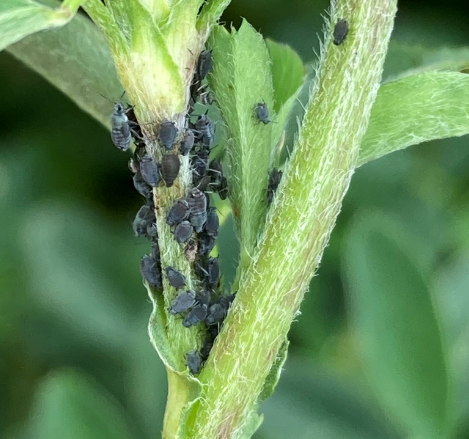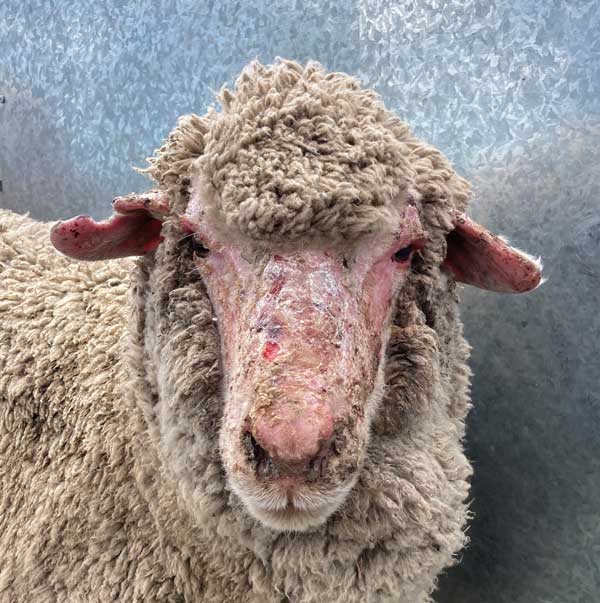Cowpea aphid infestations increasing in the Monaro – are your sheep at risk?
21 Aug 2023
Local Land Services is warning producers to keep an eye out for increasing populations of cowpea aphids on lucerne.
The small black aphids caused significant impacts to sheep and especially young lambs in 2020 following a region wide outbreak.
Local Land Services Senior Agriculture Advisor Jo Powells said this year, the early reports of these aphids breeding rapidly on lucerne in late autumn and winter are a concern.
“Producers are urged to check any of their paddocks that contain lucerne before introducing livestock and inspect paddocks currently being grazed,” Ms Powells said.
“Adult cowpea aphids are shiny black with white and black legs. The nymphs are a dull grey and non-winged adults are black and shiny. They congregate along plant stems and under young leaves where they suck on the sap of the plant.
“Looking across a paddock, patches of lucerne may appear pale and on closer inspection, young leaves may be curled, and plants can appear to be covered with a honeydew like substance.
“These aphids reproduce quickly and until natural predators such as lady beetles, predatory wasps and spiders increase in numbers and start supressing aphid numbers we remain at risk.”
Ingestion of affected lucerne by sheep has in previous years resulted in considerable production losses and impacts on animal welfare. It’s believed that the cowpea aphids contain a photodynamic fluorescent pigment that leads to photosensitisation or an increased risk of severe sunburn.
Local Land Services veterinarian Kelli Griffin is advising graziers to be cautious.
“Following exposure, animals can initially appear agitated, uncomfortable and seek shade – with exposed skin later becoming swollen, red and weepy. In severe cases, this can lead to skin cracking, dying and turning black – with large areas sloughing off completely,” Dr Griffin said.
“Lambs appear to be at higher risk of severe disease – with long term effects from skin scarring leading to blindness, permanent udder and teat damage, fleece derangements and wool breakage.
“Onset of symptoms can occur quickly with sheep appearing fine one day and displaying serious photosensitisation the next.”
Producers are encouraged to seek advice from an agronomist regarding aphid management and control options. If animals are severely affected, veterinarian assistance should be sought.
For further information regarding cowpea aphids, contact Jo Powells or Kelli Griffin at South East Local Land Services Cooma office on 02 6455 7200.
Media Contact
For more information, please contact Chris Finley via chris.finley@lls.nsw.gov.au or 0477 193 761
Image caption: Cowpea aphids congregating on lucerne

Image caption: Photosensitisation caused by ingestion of cowpea aphids
